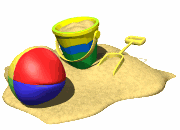

The organic matter in soil, in variable stages of decomposition, is called humus. It is nutrient rich. Negatively charged organic acids help humus attract positively charged minerals. Humus absorbs water and swells, then shrinks as it releases water. This swelling and shrinking helps to aerate soil.
The suitability of soil for plant growth depends largely on proportions of soil particles. Soil profiles are defined by the composition of soil from the surface downward. Loam topsoils have roughly equal proportions of sand, silt, and clay and are ideal for agriculture. Ideally, topsoil would have 10 to 20 percent humus.
Nutrients are elements essential for a given organism because they have roles in metabolism. Six elements are called macronutrients because they are used in significant quantities by plants and comprise more than 0.5 percent of the plant's dry weight. Oxygen, hydrogen, and carbon are macronutrients obtained from water and carbon dioxide. Nitrogen, magnesium, potassium, phosphorus, calcium, and sulfur are macronutrients dissolved in water and taken up by the roots.
Seven nutrients are used only in trace quantities and are called micronutrients. These are chlorine, zinc, iron, copper, boron, molybdenum, and manganese.
REVIEW: Carbon, hydrogen, oxygen, nitrogen, and potassium are examples of _____ for plants.
a. macronutrients
b. micronutrients
c. trace elements
d. essential elements
e. both a and d��
PREVIOUS